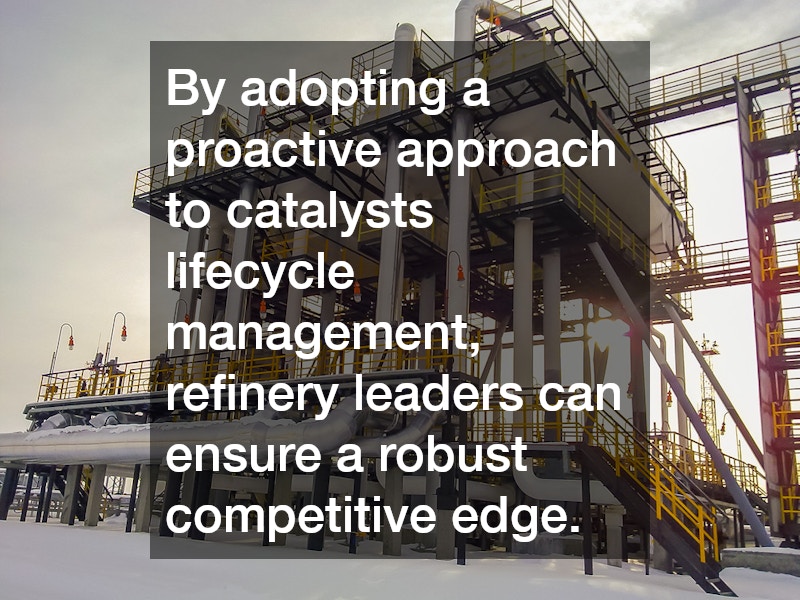Refinery and petrochemical leaders face the arduous challenge of managing spent catalysts effectively. A significant component of the refining process, catalysts facilitate chemical reactions, enabling efficient conversion processes. However, once these catalysts become inactive, they are categorized as ‘spent’ and present numerous disposal and management challenges.
It is essential to handle spent catalysts properly to mitigate environmental impacts, comply with regulatory requirements, and optimize economic returns. This article delves into the best practices that leaders in the refinery and petrochemical industries can implement for efficient spent catalyst handling.
Understanding the Importance of Efficient Spent Catalyst Handling
Efficient spent catalyst handling is paramount for both operational efficiency and environmental compliance. Refinery and petrochemical operations rely heavily on catalysts, which are essential for numerous chemical reactions. Over time, these catalysts lose their effectiveness and require safe and sustainable disposal methods. Not handling spent catalysts correctly can lead to environmental hazards and significant financial penalties. Thus, understanding the processing and management of spent catalysts is crucial for maintaining operational integrity.
The handling of spent catalysts begins with recognizing their potential environmental hazards. Spent catalysts often contain heavy metals and other contaminants that pose risks to the environment. Safe disposal and recycling of these materials help mitigate these risks. Moreover, regulatory agencies have specified stringent handling and disposal guidelines to manage this waste safely. Compliance with these regulations ensures that the refinery and petrochemical industries maintain their licenses and avoid costly fines.
Improper spent catalyst management not only threatens the environment but also incurs financial liabilities. Companies can convert these liabilities into assets by recycling and recovering valuable metals from spent catalysts. This recovery process not only addresses the environmental concerns but also adds value to the industry’s bottom line. Therefore, refinery leaders must prioritize efficient spent catalyst handling to align operational processes with both environmental standards and economic gains.
Implementing Best Practices for Spent Catalyst Management
Implementing best practices for spent catalyst management begins with understanding the lifecycle of catalysts within industrial processes. Refineries should conduct comprehensive audits to assess the quantity and types of spent catalysts generated. Establishing a detailed inventory system ensures accurate tracking and planning for appropriate disposal or recycling. Such data allows leaders to align spent catalyst handling with both local regulations and industry standards. Moreover, refining leaders should prioritize training for their teams on the latest handling technologies and practices.
Another critical best practice involves selecting appropriate partners for spent catalyst disposal and recycling. Refineries should engage with licensed waste management companies that specialize in handling and recycling hazardous materials. These partnerships ensure that spent catalysts are managed by professionals with the necessary expertise and equipment for safe processing. Furthermore, leveraging these partnerships can improve resource recovery and minimize waste. By establishing these collaborations, refineries can tap into broader networks for innovation and improvement in spent catalyst management.
Moreover, integrating eco-friendly technologies into the handling process enhances the sustainability of spent catalyst management. Advanced technologies offer more efficient and environmentally friendly methods for recycling and recovery. For instance, innovations in hydrometallurgical and pyrometallurgical processes enable more thorough recovery of metals from spent catalysts. Implementing these technologies reduces the overall environmental footprint of refining operations. Refinery leaders should remain abreast of technological advancements to incorporate the best available practices into their operations.
Advancing Operational Efficiency Through Spent Catalyst Handling
Efficient spent catalyst handling significantly advances operational efficiency and sustainability in the refinery and petrochemical sectors. By optimizing the recycling and recovery process, industries can maximize resource utilization. This optimization not only supports environmental sustainability but also enhances operational cost-efficiency. The advancements in catalyst recovery technologies allow for better yield of valuable metals, such as platinum and palladium, from spent catalysts. Consequently, these practices provide a notable return on investment, thereby bolstering operational performance.
Furthermore, enhancing operational efficiency through spent catalyst management involves embedding sustainability into the corporate strategy. Refinery leaders should integrate environmental objectives with financial goals to create a cohesive approach to handling spent catalysts. Establishing clear metrics and tracking systems can support the operationalization of these objectives, helping to identify areas for improvement. This alignment ensures that spent catalyst management continues to support not only regulatory compliance but also strategic operational objectives. Ultimately, efficient handling processes contribute to a lower environmental impact and a higher return on investment.
Looking ahead, the effective handling of spent catalysts will continue to play a crucial role in the success and sustainability of refinery and petrochemical operations. By adopting a proactive approach to catalysts lifecycle management, refinery leaders can ensure a robust competitive edge in the industry. Through concerted efforts, the industry can achieve a balanced relationship between environmental stewardship and operational excellence.


